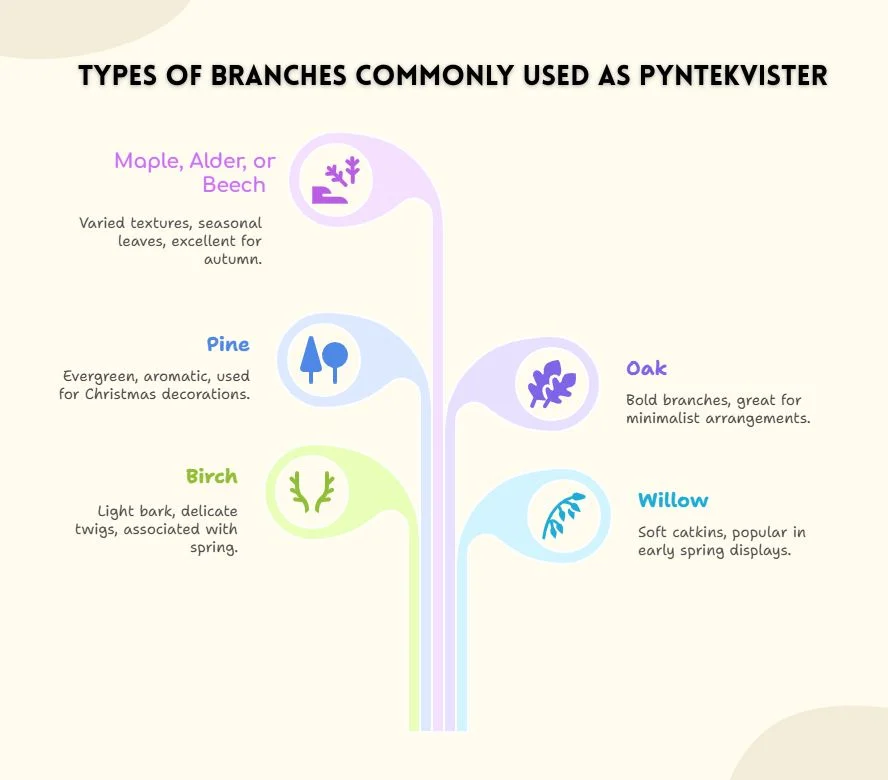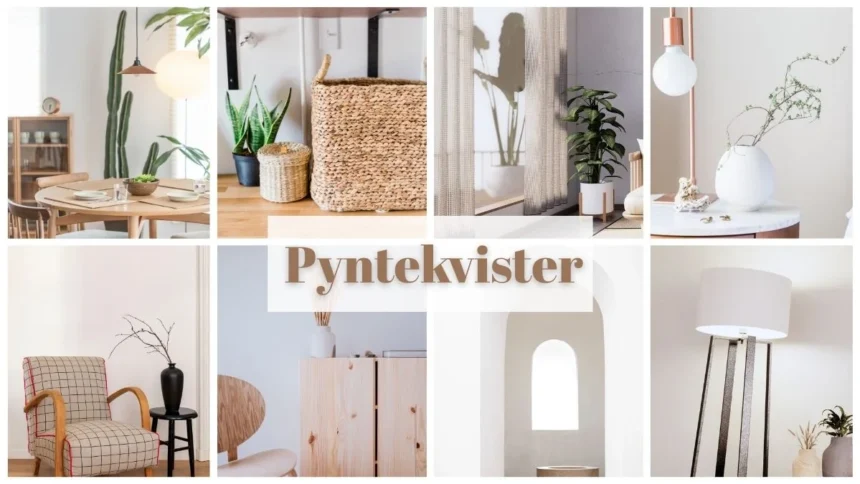In the heart of Scandinavian interior design lies a philosophy that embraces simplicity, functionality, and a deep connection with nature. One beautiful manifestation of this design ethos is pyntekvister, a Norwegian term that translates to “decorative branches” or “ornamental twigs.” These carefully chosen natural elements are more than just rustic decor; they reflect Nordic traditions that value sustainability, seasonal living, and the organic beauty of the outdoors.
- What is Pyntekvister?
- Cultural Roots of Pyntekvister in Norway
- Pyntekvister and Scandinavian Design Philosophy
- Types of Branches Commonly Used as Pyntekvister
- Creative Ways to Use Pyntekvister in Home Decor
- Why Choose Pyntekvister?
- Pyntekvister in Modern Interior Trends
- How to Care for Pyntekvister
- Seasonal Inspiration with Pyntekvister
- Conclusion
From birch and willow to oak and pine, pyntekvister bring a sense of the forest indoors, transforming spaces into cozy sanctuaries that balance minimalism with warmth. Whether placed in a simple vase, adorned with fairy lights, or decorated with ornaments during the holidays, pyntekvister represent a timeless way to enhance interiors without excess.
What is Pyntekvister?
Pyntekvister are decorative branches used as natural interior ornaments in Norwegian and broader Scandinavian households. Unlike artificial decor, these branches are real twigs collected from nature, making each piece unique in shape, texture, and character.
They can be used:
- As stand-alone natural arrangements in minimalist vases.
- As seasonal displays with ornaments, flowers, or lights.
- As wall art or hanging installations to create organic focal points.
Because pyntekvister require little to no maintenance and can be reused or changed seasonally, they perfectly embody the Scandinavian principle of “less is more.”
Cultural Roots of Pyntekvister in Norway
Norwegian and Scandinavian culture has always been deeply tied to nature. With long winters and short summers, people historically sought ways to bring outdoor beauty into their homes. Branches, twigs, and foliage symbolized the changing seasons, creating a visual connection to the landscapes outside.
In rural Norway, bringing in birch twigs during Easter was common, often decorated with colorful feathers, symbolizing renewal and springtime. Similarly, during Christmas, evergreen branches and pine twigs were adorned with ornaments to represent life and resilience in the darkest months of the year.
Pyntekvister and Scandinavian Design Philosophy
Scandinavian interior design is renowned worldwide for its clean lines, natural elements, and functionality. At its core, it blends minimalism, comfort Norwegian concept of cozy living.
Pyntekvister align perfectly with these values:
- Minimalist: A single branch in a simple vase makes a striking statement.
- Organic: They emphasize natural textures, shapes, and imperfections.
- Cozy & inviting: When paired with soft lighting, they create warmth and intimacy.
- Sustainable: Instead of plastic decorations, pyntekvister uses renewable natural resources.
This design approach proves that beauty does not always come from abundance, but from simplicity and authenticity.
Types of Branches Commonly Used as Pyntekvister
Not all branches are equally suitable for decoration. The choice often depends on the season, availability, and desired aesthetic. Some popular types include:
Birch (Bjørk)
- Light-colored bark and delicate twigs.
- Associated with spring and Easter in Norway.
Willow (Selje)
- Known for its soft catkins (“pussy willow”).
- Popular in early spring displays.
Pine (Furu)
- Evergreen, intense, and aromatic.
- Often used during Christmas for a festive look.

Oak (Eik)
- Bold, sturdy branches with interesting shapes.
- Great for year-round minimalist arrangements.
Maple, Alder, or Beech
- Offer varied textures and seasonal leaves.
- Excellent for autumnal displays.
Creative Ways to Use Pyntekvister in Home Decor
Pyntekvister are highly versatile and can be styled in countless ways, depending on personal taste and the season’s mood. Here are some popular and creative approaches:
1. Minimalist Vase Arrangements
A single tall branch in a ceramic or glass vase creates an elegant and modern centerpiece. This is perfect for entryways, dining tables, or windowsills.
2. Seasonal Displays
- Easter: Birch twigs decorated with feathers and pastel ornaments.
- Christmas: Pine branches adorned with baubles, stars, and fairy lights.
- Autumn: Bare branches combined with dried leaves and berries.
3. Hanging decor
Branches can be hung horizontally on walls, decorated with hanging ornaments, photos, or dried flowers, creating a nature-inspired installation.
4. Fairy Light Enhancements
Wrapping twigs with warm fairy lights creates a magical glow, especially cozy during dark winter evenings.
5. Tabletop or Mantelpiece Styling
Smaller twigs can be arranged in bowls, jars, or candle holders to add rustic charm to tablescapes.
Why Choose Pyntekvister?
- Sustainability: Unlike plastic decorations, pyntekvister are eco-friendly. They can be composted after use or repurposed for new arrangements.
- Cost-Effectiveness: Branches can be gathered freely from nature, making them one of the most affordable yet stylish home decor choices.
- Timeless Elegance: Natural materials never go out of style. Pyntekvister fits both modern and traditional interiors.
- Personalization: Every branch is unique, allowing homeowners to create one-of-a-kind arrangements.
- Connection with Nature: Incorporating natural elements indoors fosters well-being and brings balance to daily life.
Pyntekvister in Modern Interior Trends
With the rise of biophilic design, an architectural trend focused on connecting humans with nature pyntekvister has gained even more popularity in contemporary homes. Interior stylists often use them in Scandi-style, Japandi, and minimalist homes, where clean aesthetics meet organic textures.
On social media platforms like Instagram and Pinterest, pyntekvister frequently appear in styling inspiration posts, reflecting their growing role in global interior trends. Their adaptability makes them suitable for urban apartments as much as rural cottages.
How to Care for Pyntekvister
One of the advantages of pyntekvister is its low maintenance. Here are a few simple tips:
- Dry branches: Keep them in a vase without water to prevent decay.
- Fresh branches: Place flowering twigs (like cherry or willow) in water to encourage blooming.
- Dust removal: Gently wipe branches to keep them clean.
- Reuse creatively: Rotate decorations with the seasons to extend their lifespan.
Seasonal Inspiration with Pyntekvister
- Winter: Snow-sprayed twigs or pine branches with silver ornaments.
- Spring: Willow or birch with budding flowers and pastel decorations.
- Summer: Fresh green branches paired with wildflowers.
- Autumn: Bare branches with dried foliage, berries, and earthy tones.
By adapting decorations seasonally, Pyntekvister ensures your home always feels refreshed and in tune with nature.
Conclusion
Pyntekvister are far more than decorative branches; they embody Scandinavian living. Rooted in tradition yet timeless style, they bring the beauty of nature into modern homes while embracing values of simplicity, sustainability, and coziness.
Whether used in minimalist vases, festive arrangements, or creative wall displays, pyntekvister offer a versatile and elegant way to elevate any interior. As people worldwide seek eco-friendly and meaningful decor, these Norwegian decorative branches prove that the simplest elements often create the most lasting impressions.






